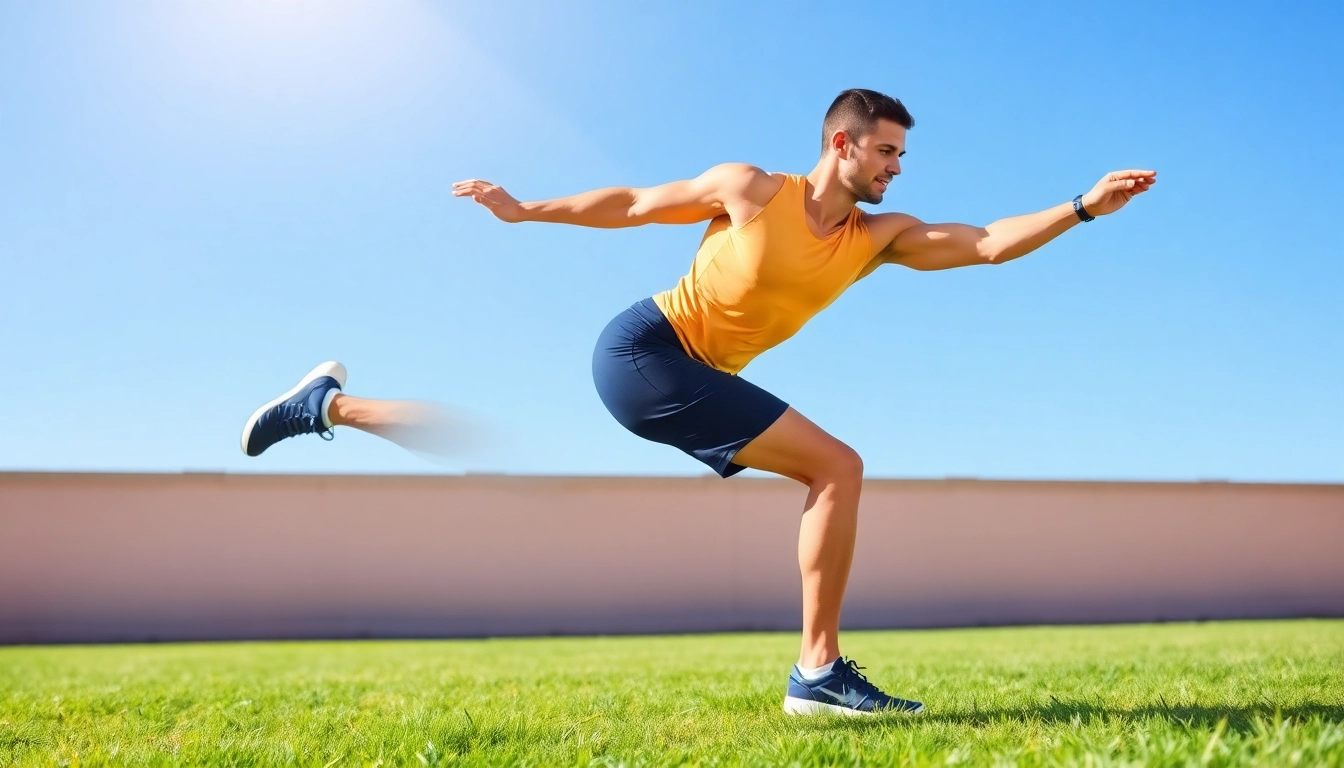
Understanding Mobility Training
Mobility training is a subject that often doesn’t get the attention it deserves in fitness discussions. Yet, it is an essential component for anyone looking to improve their overall performance, flexibility, and strength. Whether you’re an athlete, a weekend warrior, or simply someone looking to maintain their fitness, understanding mobility training can revolutionize your approach to workouts.
What is Mobility Training?
Mobility training involves exercises designed to improve the range of motion in your joints and the flexibility of your muscles. Unlike traditional stretching, which focuses on lengthening muscles, mobility training emphasizes dynamic movements that train your body to control its range of motion actively. Think of it as enhancing your body’s ability to move through a full range of motion efficiently and safely. This training involves a blend of flexibility, strength, and stability, ensuring that not only are muscles lengthened but they are also trained to support functional movement.
Benefits of Mobility Training
The advantages of incorporating mobility training into your regimen are extensive, impacting various aspects of physical performance and everyday life:
- Enhanced Performance: Increased range of motion can lead to improved strength and power output, which is particularly beneficial in performance sports.
- Injury Prevention: By increasing flexibility and strength around the joints, mobility training helps to reduce the likelihood of injuries.
- Improved Posture: Many mobility exercises target common postural flaws, enhancing overall body alignment and reducing strain on muscles.
- Better Recovery: Mobility work promotes blood flow and can accelerate recovery processes by easing muscle tension.
- Increased Awareness: Engaging in mobility training increases body awareness, enabling individuals to understand their physical capabilities and limitations better.
Common Misconceptions
Despite its many benefits, mobility training is often misunderstood. Some of the frequent misconceptions include:
- Mobility is the same as flexibility: While they are related, flexibility refers specifically to the muscle’s ability to lengthen, while mobility encompasses the joint’s ability to move freely and the muscles’ capacity to control those movements.
- You only need to focus on mobility if you’re an athlete: Everyone, regardless of activity level, can benefit from improved mobility, whether for better daily function or injury prevention.
- Mobility work is unnecessary if you’re flexible: Flexibility alone does not guarantee the control or strength needed to utilize that range of motion properly. It’s vital to pair flexibility with strength, which mobility training facilitates.
Essential Mobility Exercises
Dynamic vs. Static Mobility Work
When discussing mobility exercises, it’s essential to distinguish between dynamic and static movements:
- Dynamic Mobility: These exercises involve movements that actively engage your muscles and joints, promoting range of motion through controlled movements. Examples include leg swings, inchworms, and shoulder circles. Dynamic mobility exercises are often used as part of a warm-up routine to prepare the body for more strenuous activity.
- Static Mobility: In contrast, static mobility exercises involve holding a position to stretch and lengthen the muscles. These are commonly found at the end of workouts or during recovery sessions. For instance, static holds like the butterfly stretch or seated forward fold help enhance flexibility.
Top 10 Mobility Exercises for All Levels
Here’s a mix of dynamic and static exercises to enhance mobility across all levels:
- Hip Circles: Stand on one leg and circle the other leg at the hip joint to increase mobility in the hips.
- Inchworms: From a standing position, bend forward, walk your hands out to a plank, and walk your feet up to your hands. This engages multiple muscle groups while promoting core strength.
- Cat-Cow Stretch: This yoga pose not only improves spine mobility but also opens up the hips and shoulders.
- Thoracic Spine Rotation: Start in a hands-and-knees position and rotate your upper body, reaching one arm towards the ceiling. This enhances thoracic spine mobility.
- Cossack Squats: A lateral squat that significantly increases hip joint mobility and flexibility while promoting leg strength.
- Walking Lunges with Rotation: As you lunge forward, twist your torso towards the leg that is in front. This dual action works the lower and upper body.
- Shoulder Pass-Through: Use a resistance band or PVC pipe held wide and move it over your head and down your back to enhance shoulder joint mobility.
- Deep Squats: Squatting deep (while maintaining form) improves mobility in the hips, knees, and ankles, which is crucial for athletic performance.
- Wall Angels: Stand against a wall with your back flat and arms in a W position; raise them to resemble a Y while keeping contact with the wall, promoting good posture and shoulder mobility.
- Ankle Dorsiflexion Stretch: Kneeling on one knee with the foot in front, push your knee forward over your toes to enhance ankle mobility.
Incorporating Mobility Training into Your Routine
To enjoy the benefits of mobility training, consider these strategies for integrating it into your workout regimen:
- Warm-ups: Consider adding dynamic mobility exercises to your warm-up routine to prepare your body for physical activity.
- Dedicated Sessions: Plan specific sessions focused solely on mobility to ensure consistency.
- Cooldowns: Incorporate static stretches as part of your cooldown to promote recovery and flexibility.
- Daily Practices: Even a few short minutes of mobility work daily can lead to significant improvements over time.
- Mindfulness: Pay attention to how your body feels throughout movements to develop an understanding of your personal mobility needs.
Assessing Your Mobility
Self-Assessment Techniques
Assessing your mobility starts with understanding your body’s limitations. Consider these self-assessment techniques:
- Joint Mobility Tests: Perform joint-specific tests such as shoulder flexion and extension or hip internal and external rotation to identify range of motion limitations.
- Functional Movements: Assess how you perform everyday movements like squats, lunges, and reaching overhead. Any pain or difficulty may highlight areas to focus on.
- Video Analysis: Record yourself doing mobility exercises or functional movements to visually assess your technique and range of motion.
Identifying Areas for Improvement
Once you’ve conducted a self-assessment, identify specific joint areas that require additional focus. Common areas that may need improvement include:
- Hips: Tight hips can limit squat depth and overall athletic performance.
- Shoulders: Poor shoulder mobility can negatively impact overhead movements.
- Thoracic Spine: Limited thoracic mobility can hinder upper body movement and lead to bad posture.
Tracking Your Progress
Tracking your mobility progress is essential for long-term improvement. Use the following strategies:
- Mobility Log: Keep a log of exercises, repetitions, and mobility assessments to observe improvements over time.
- Regular Testing: Schedule periodic mobility assessments to evaluate changes in your range of motion and strength.
- Incorporate Feedback: Wenn training with others, seek feedback from trainers or peers to enhance your understanding of your progress.
Integrating Mobility Training with Other Workouts
Benefits of Combining Strength & Mobility Training
Integrating mobility training with strength exercises yields various benefits:
- Enhanced Strength Performance: Improved mobility allows for better movement patterns, leading to increased strength performance.
- Reduced Injury Risk: Training both strength and mobility simultaneously can protect against injuries by ensuring the body is both strong and flexible.
- Balance and Coordination: Coupling mobility work with strength training helps to build better balance and overall functional movement capabilities.
Safe Ways to Add Mobility to Cardio Routines
To ensure safety, consider these approaches to integrate mobility into your cardio workouts:
- Dynamic Movements: Add dynamic mobility exercises during cardio sessions to maintain joint health while keeping your heart rate elevated.
- Short Mobility Breaks: Take breaks during longer cardio sessions to perform short mobility drills, which can relieve tension and improve efficiency.
- Cool Down: Implement mobility-focused stretches at the end of cardio workouts to enhance flexibility and aid recovery.
Creating a Balanced Training Program
A well-rounded training regimen should include:
- Strength Training: Aim to build muscle strength through heavy lifting.
- Cardiovascular Work: Include aerobic exercises for heart health.
- Mobility Training: Incorporate mobility-focused workouts for joint health.
- Flexibility and Recovery: Allocate time for stretching and cooling down to promote recovery effectively.
Expert Tips for Enhanced Mobility
Common Mistakes to Avoid
When starting a mobility program, be mindful of these frequent errors:
- Neglecting Warm-Up: Jumping into mobility work without warming up can lead to injuries.
- Overdoing It: Pushing through pain during mobility exercises can cause more harm than good; always listen to your body.
- Focusing Solely on Static Stretching: Relying only on static stretches neglects the essential dynamic aspect of mobility training.
How to Stay Motivated with Your Mobility Training
Staying motivated in your mobility practice can sometimes be challenging. Here are a few tips to sustain momentum:
- Set Clear Goals: Having specific, measurable goals can help keep you focused.
- Incorporate Variety: Change up your exercises to prevent boredom and challenge your body in new ways.
- Join a Class: Participating in group classes can offer support and accountability.
- Document Progress: Keeping track of your improvement can serve as a motivational tool.
Resources for Continued Learning
To deepen your knowledge of mobility training, consider exploring:
- Books: Refer to literature on physical training, anatomy, and biomechanics.
- Online Courses: Enroll in mobility-specific courses, often offered by reputable fitness organizations.
- YouTube Channels: Numerous fitness experts share mobility routines that offer fresh ideas and techniques.
- Podcasts: Educational podcasts can offer insights from professionals in the field.







